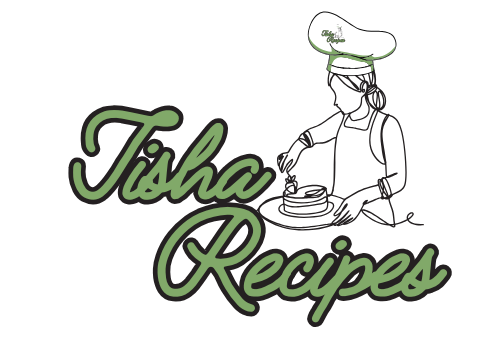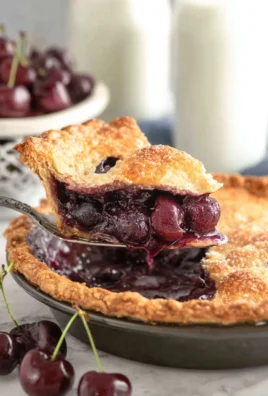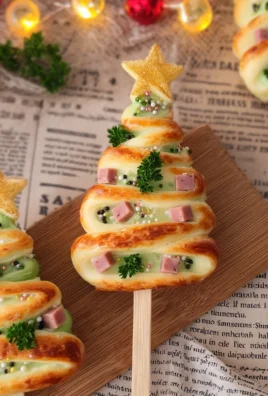
Key Lime Pie is an iconic dessert that perfectly balances tangy, sweet, and creamy flavors. Originating from the sunny Florida Keys, it has become a beloved treat enjoyed across the United States and beyond. Known for its zesty lime flavor, silky texture, and crumbly crust, Key Lime Pie is a dessert that evokes nostalgia and tropical vibes in every bite. Whether topped with whipped cream or meringue, it never fails to delight those who crave a refreshing and indulgent treat.
Overview of Key Lime Pie
At its core, Key Lime Pie is a harmonious combination of three components: a crunchy crust, a creamy lime-infused filling, and a light, fluffy topping. The traditional recipe calls for Key lime juice, sweetened condensed milk, and egg yolks, creating a rich yet tangy filling that sets beautifully when baked. While the classic graham cracker crust is most common, variations include pastry crusts or even crusts made from gingersnaps or digestive biscuits.
The topping is equally flexible, ranging from a simple dollop of whipped cream to a golden-brown meringue. The result is a dessert that can be rustic or elegant, depending on how it’s presented. Despite its simplicity, Key Lime Pie offers a depth of flavor that makes it a standout dessert.
The Origin of Key Lime Pie
The origins of Key Lime Pie are closely tied to the Florida Keys, where Key limes once grew in abundance. This small, aromatic citrus fruit, known for its tart and floral flavor, serves as the defining ingredient of the pie. Historical accounts suggest that Key Lime Pie was first created by settlers in the Keys who had limited access to fresh dairy products and relied on canned sweetened condensed milk as a staple ingredient.
The development of the pie is believed to date back to the late 19th or early 20th century. One theory credits the recipe to sponge fishermen who required a dessert that could be made without refrigeration, which was unavailable in the remote Keys. Another popular story attributes the pie’s invention to the cooks of William Curry, a wealthy Key West ship salvager, whose household staff purportedly developed the recipe using locally available ingredients.
Key Limes: The Heart of the Pie
Key limes, also known as Mexican or West Indian limes, are smaller and more flavorful than the more common Persian limes. They have a thinner rind and a unique yellow-green color when ripe. Their juice is intensely tart with a distinct floral aroma, setting them apart from their larger, milder counterparts.
Although Key limes were once a staple crop in Florida, commercial production declined after the 1926 hurricane that devastated the region. Today, many recipes rely on bottled Key lime juice, which offers convenience while retaining much of the fruit’s signature flavor. However, purists often advocate for fresh Key limes, believing their zest and juice provide unparalleled authenticity.
Evolution of the Recipe
Over the years, the traditional Key Lime Pie recipe has seen numerous adaptations. While the original version used a crust made from leftover bread or pastry scraps, the graham cracker crust has become the gold standard due to its sweet, crunchy contrast to the tangy filling. Similarly, the filling has evolved from an unbaked mixture thickened by lime juice to a baked custard, ensuring food safety and a firmer set.
Toppings have also changed, with meringue—a popular choice in the early 20th century—gradually giving way to whipped cream. Some modern versions incorporate sour cream, cream cheese, or even coconut milk into the filling for added richness or a twist on the traditional flavor profile.
Cultural Significance of Key Lime Pie
Key Lime Pie holds a special place in American culinary history and culture, particularly in Florida. It was designated the official state pie of Florida in 2006, solidifying its status as a symbol of the region. Festivals celebrating Key Lime Pie are held annually in the Keys, featuring competitions, tastings, and even pie-eating contests.
Beyond its regional ties, the pie has gained international acclaim as a quintessentially American dessert. It has been featured in countless cookbooks, television shows, and menus, reflecting its widespread popularity and enduring appeal.
The Science Behind Key Lime Pie
The unique texture of Key Lime Pie is the result of a chemical reaction between the acidic lime juice and the proteins in the egg yolks and sweetened condensed milk. This reaction, known as curdling, causes the filling to thicken without requiring heat. While many modern recipes call for baking the pie to ensure safety and a firmer set, the initial thickening process occurs almost instantly when the ingredients are combined.
The crust also plays a vital role in the pie’s success. The graham cracker crumbs absorb some of the moisture from the filling, preventing sogginess and adding a pleasant crunch. Meanwhile, the topping—whether whipped cream or meringue—offers a light contrast to the dense, creamy filling.
Variations and Modern Twists
While the classic Key Lime Pie remains a favorite, bakers have introduced creative variations to suit different tastes and dietary needs:
- No-Bake Versions: Perfect for warm climates, these pies rely on the acidity of the lime juice to set the filling without baking.
- Cheesecake Hybrid: Combining cream cheese with the traditional filling creates a richer, denser dessert.
- Coconut Crust: Using shredded coconut in the crust adds a tropical twist that pairs beautifully with the lime flavor.
- Vegan Key Lime Pie: Substitutes like coconut cream, agar-agar, and plant-based sweetened condensed milk make the dessert accessible to vegans.
- Chocolate-Dipped Key Lime Pie Bars: A fun take on the dessert, these frozen bars are dipped in chocolate for a portable treat.
Key Lime Pie Around the World
Although it originated in Florida, Key Lime Pie has inspired variations across the globe. In Mexico, similar pies use Mexican limes and may incorporate flavors like tequila or mezcal. In tropical regions, coconut or mango is often added to highlight local ingredients. These adaptations demonstrate the dessert’s versatility and global appeal.
The Debate Over Authenticity
Discussions about what constitutes an authentic Key Lime Pie often spark passionate debates. Purists argue that only fresh Key lime juice should be used, while others accept bottled juice as a practical alternative. Similarly, the choice of crust—graham cracker versus pastry—and topping—whipped cream versus meringue—continues to divide opinions. Despite these differences, the shared love for this dessert unites enthusiasts around the world.
Key Lime Pie remains a timeless classic that has evolved while retaining its essential charm. Its refreshing flavor, rich history, and adaptability ensure it will continue to delight dessert lovers for generations to come.
The Recipe for Authentic Key Lime Pie
Ingredients for the Graham Cracker Crust:
- 1 ½ cups graham cracker crumbs (about 10 full crackers)
- 6 tablespoons unsalted butter, melted
- ¼ cup granulated sugar
Ingredients for the Filling:
- 4 large egg yolks
- 1 can (14 ounces) sweetened condensed milk
- ½ cup freshly squeezed Key lime juice (approximately 20-25 Key limes)
- 1 tablespoon finely grated Key lime zest
Ingredients for the Topping:
- 1 cup heavy whipping cream
- 2 tablespoons powdered sugar
- ½ teaspoon vanilla extract
Step-by-Step Instructions
1. Prepare the Crust:
- Preheat the oven to 350°F (175°C).
- In a medium mixing bowl, combine the graham cracker crumbs, melted butter, and granulated sugar. Mix until the texture resembles wet sand.
- Press the crumb mixture evenly into the bottom and up the sides of a 9-inch pie dish. Use the bottom of a measuring cup to compact the crust firmly.
- Bake the crust for 8-10 minutes, or until golden and fragrant. Remove from the oven and let it cool slightly while preparing the filling.
2. Make the Filling:
- In a large mixing bowl, whisk the egg yolks until they appear slightly thickened and pale in color. This step helps incorporate air into the filling.
- Gradually add the sweetened condensed milk to the egg yolks, whisking constantly until fully combined.
- Stir in the Key lime juice and zest. Mix until smooth and slightly thickened. The acidity of the lime juice will naturally thicken the filling as it reacts with the other ingredients.
3. Assemble and Bake the Pie:
- Pour the lime filling into the pre-baked graham cracker crust, spreading it evenly with a spatula.
- Bake the pie at 350°F (175°C) for 15 minutes, or until the filling is set but still jiggles slightly in the center when shaken.
- Remove the pie from the oven and let it cool to room temperature. Once cooled, refrigerate for at least 3 hours to fully set.
4. Prepare the Whipped Cream Topping:
- In a chilled mixing bowl, combine the heavy whipping cream, powdered sugar, and vanilla extract.
- Use a hand mixer or stand mixer fitted with the whisk attachment to beat the mixture on medium-high speed until soft peaks form.
- Spread or pipe the whipped cream onto the chilled pie, creating decorative swirls or patterns as desired.
Techniques for a Perfect Key Lime Pie
1. Achieving the Ideal Crust Texture:
For a sturdy yet crumbly crust, ensure the graham cracker mixture is evenly moistened with melted butter. Press the mixture firmly into the pie dish, focusing on compacting the edges to prevent crumbling when slicing.
2. Balancing the Filling:
- Use freshly squeezed Key lime juice for the best flavor. Bottled juice works in a pinch but may lack the vibrant tang of fresh limes.
- Incorporate finely grated zest to enhance the lime aroma and add subtle bursts of flavor. Avoid grating the bitter white pith beneath the zest.
3. Perfecting the Whipped Cream:
- Chill the bowl and whisk before whipping the cream for faster and more stable results.
- Add powdered sugar gradually to achieve the desired sweetness without over-sweetening.
4. Presentation Tips:
- Garnish the pie with thin slices of Key lime, additional zest, or edible flowers for a decorative touch.
- Use a piping bag with a star tip for elegant whipped cream designs.
Variations of Key Lime Pie
1. No-Bake Key Lime Pie:
For a no-bake version, omit the eggs and bake-free filling:
- Mix softened cream cheese with sweetened condensed milk, Key lime juice, and zest.
- Pour the filling into the prepared crust and chill until set.
2. Vegan Key Lime Pie:
Substitute the filling ingredients with plant-based alternatives:
- Use coconut cream, cashew cream, or silken tofu for the creamy base.
- Opt for vegan sweetened condensed milk and agar-agar for thickening.
3. Chocolate Key Lime Pie:
Enhance the crust by adding 2 tablespoons of cocoa powder to the graham cracker mixture. Top the finished pie with chocolate shavings or drizzle melted chocolate over the whipped cream.
4. Coconut Key Lime Pie:
Replace a portion of the graham cracker crumbs in the crust with shredded coconut for added texture and tropical flavor. Garnish the pie with toasted coconut flakes.
Tips for Troubleshooting Common Issues
1. Soggy Crust:
- Ensure the crust is pre-baked before adding the filling to create a barrier that prevents sogginess.
- Use a generous amount of butter to bind the crumbs and create a firm crust.
2. Runny Filling:
- If the filling doesn’t set properly, it may need additional baking time. Bake in 2-minute increments until the center jiggles slightly but isn’t liquid.
- Refrigerate the pie for at least 3 hours after baking to allow it to firm up.
3. Overly Tart Filling:
- Balance the tartness by slightly reducing the amount of lime juice or adding an extra tablespoon of sweetened condensed milk.
4. Cracking Filling:
- Cracks can form if the pie is overbaked. Keep an eye on the filling and remove it from the oven as soon as it sets around the edges.
Serving Suggestions
Key Lime Pie is best served chilled, allowing the creamy filling to contrast beautifully with the crunchy crust. Slice the pie with a clean, sharp knife wiped with a damp cloth between cuts to maintain neat edges. Pair with the following for an elevated dessert experience:
- Beverages: Serve with a cup of coffee, iced tea, or a sparkling citrus cocktail for complementary flavors.
- Dessert Plate: Pair a slice with a small scoop of coconut or vanilla ice cream for added indulgence.




Leave a Comment